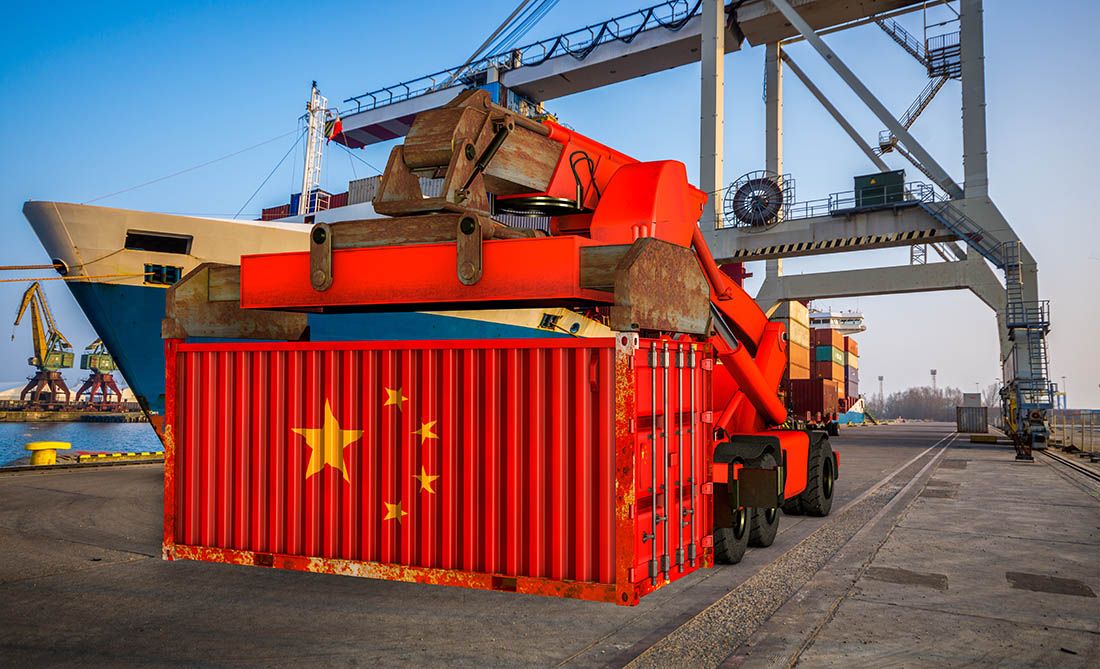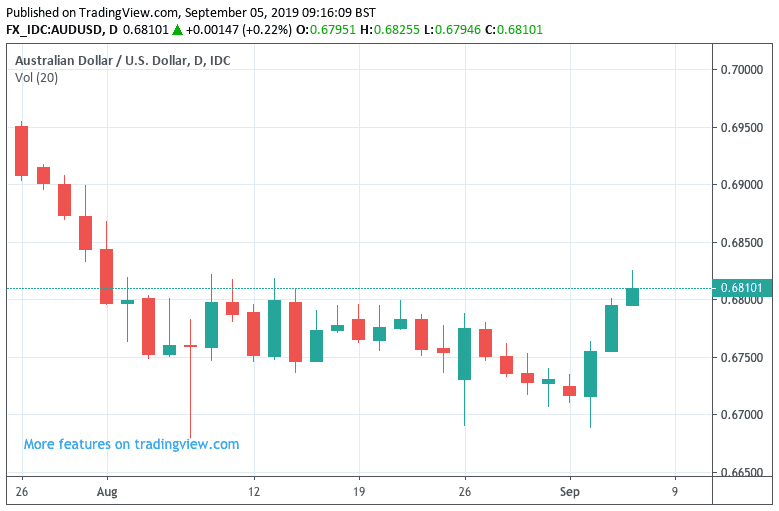Australian Dollar Charges Higher on Trade War Détente and Domestic Trade Numbers
- Written by: Gary Howes

Image © Adobe Images
- U.S. and China agree to talk trade
- Risk assets such as AUD on the move higher
- AUD further supported by domestic trade data
It's all about trade for the Australian Dollar today, with news of a thawing in the U.S.-China trade war and strong trade surplus numbers out of Austrlaia proving supportive.
Global stock markets and currencies that tend to derive a good dose of value from the Chinese economy were trading higher Thursday following positive developments in the U.S.-China trade war arena.
The U.S. and China have agreed to proceed with trade talks in October, ensuring a thawing of tensions between the world's two largest economies.
Global trade has fallen steadily through the course of 2019 as trade tensions between the U.S. and China ratcheted up, leading to concerns for the outlook of global growth.
Fears for a slowdown in the Chinese economy meanwhile hit the currencies of those countries with strong trade links with China, with the Australian and New Zealand Dollars being the most notable.
Indeed, the Australian Dollar is considered to be a liquid proxy for investors seeking exposure to Chinese fortunes.
A détente in the trade war could therefore be construed as being a positive for global growth and the Australian Dollar.
"Risk sentiment was boosted by a confluence of factors, including reports that US-China trade talks will resume next month. Other factors include a perceived reduction in no-deal Brexit risks and the withdrawal of the extradition bill in Hong Kong," says Hann-Ju Ho, an economist with Lloyds Bank.
Following the news the Pound-to-Australian Dollar exchange rate was quoted at 1.7963, down 0.4%.
The Aussie is meanwhile looking to notch up its third consecutive day of advances against the U.S. Dollar, with the AUD/USD exchange rate quoted at 1.1086 at the time of writing.
"News that senior Chinese and US officials will meet in early October to progress trade talks also supported AUD," says Kim Mundy, a strategist with Commonwealth Bank of Australia in Sydney. "AUD will be subject to global factors such as news on the US‑China trade tensions and US economic data, including US August non –farm payrolls data tomorrow."
The Australian currency has also been supported by domestic data, released overnight.
According to statistics, Australia's trade surplus eased by less than expected to $A 7.3 billion in July, consensus had been looking for a reading of $A 7.0 billion.
"Australia's July trade surplus is still very large and the second largest on record, led by a 1.0% rise in exports and a 3.0% lift in imports," says Mundy.
The trade surplus matters for currencies simply because it is through trade that a country earns foreign currency; if a country has a trade surplus it suggests it exports more than it imports, therefore demand for the domestic country outstrips supply of the currency.
The data is therefore likely to provide a fundamental underpinning to a currency that has struggled thus far in 2019: AUD/USD is 3% down on the U.S. Dollar in 2019, and 6% down on the Yen and Canadian Dollar.
It has however recorded a 0.8% gain on Sterling, but considering the Brexit uncertainty that has befallen the British currency, one might expect a stronger performance.
How long Australia's strong trade performance can continue providing its currency with a fundamental underpinning could be significant.
Hayden Dimes, an economist with ANZ says Australia might now have witnessed a peak in its trade surplus.
"July has delivered another massive trade surplus, although coming off the revised record high of the previous month. The decline from the previous month largely reflected a pick-up in imports. Consumption imports were the main drivers of this rise, in particular car imports. Exports were only up a touch, with LNG and gold exports helping offset declines in iron ore and coal," says Dimes in a note to clients.
ANZ economists believe Australia has likely reached the peak in trade surpluses.
"We still anticipate strong surpluses from here but expect their size to decline as key commodity prices, like iron ore, stabilise at lower, though still elevated, levels," says Dimes.
Time to move your money? Get 3-5% more currency than your bank would offer by using the services of foreign exchange specialists at RationalFX. A specialist broker can deliver you an exchange rate closer to the real market rate, thereby saving you substantial quantities of currency. Find out more here.
* Advertisement





